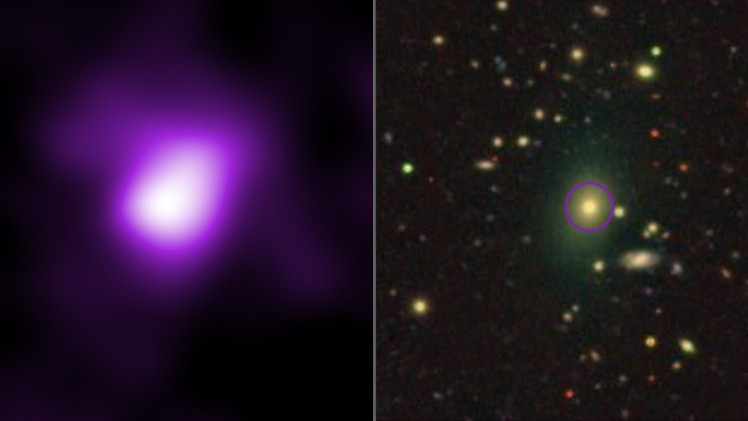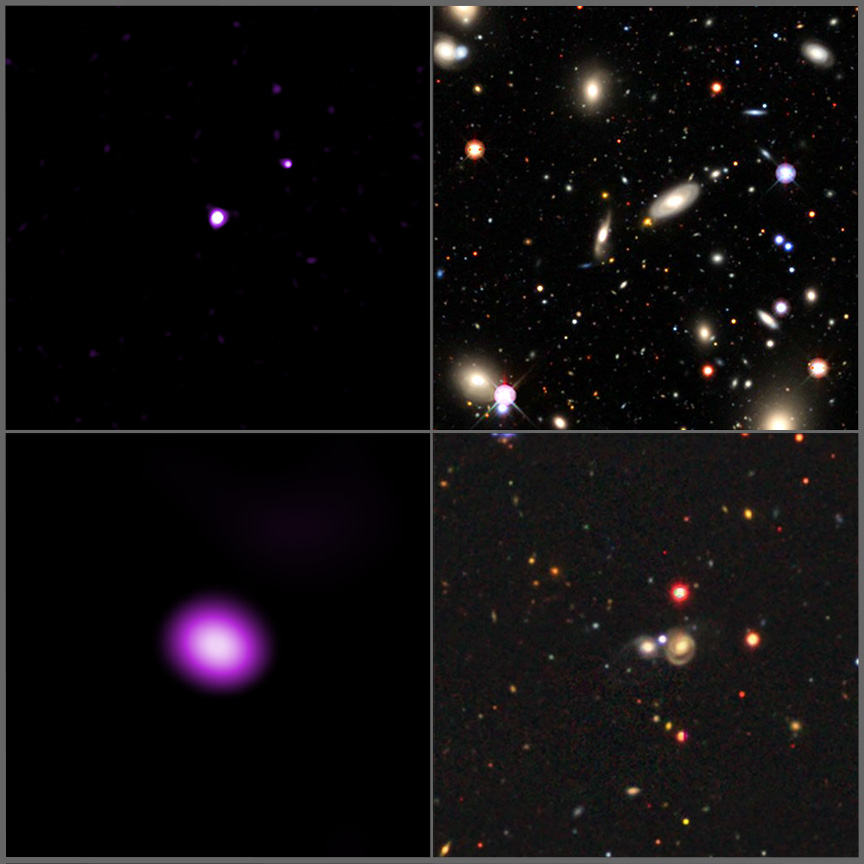
Astronomers have uncovered more than 400 previously hidden black holes feeding on stars and dust in the center of galaxies. It appears that many of the new black holes, discovered using NASA's Chandra X-ray Observatory, remained unknown until now because they are buried beneath cocoons of dust.
Supermassive black holes, which can be millions of times heavier than the sun, live in the center of almost every galaxy in the universe. These colossal objects produce bright beams of energy as they feed on gas, dust, and stars in their immediate vicinity, creating what are known as Active Galactic Nuclei (AGN), according to NASA.
AGN are particularly bright in the X-ray portion of the electromagnetic spectrum, said astronomer Dong-Woo Kim of the Harvard and Smithsonian Center for Astrophysics during a news conference Jan. 11 at the 241st meeting of the American Astronomical Society in Seattle.
They also leave telltale visible patterns in optical light, which identify them as AGN, he added.

But certain objects have been spotted giving off tons of X-rays without the specific optical signatures associated with AGN, Kim said, and these have been named "X-ray bright optically normal galaxies" or "XBONGs."
In order to investigate these mysterious entities further, he and his colleagues looked at a catalog of more than 300,000 bright X-ray objects captured by Chandra.
They then grabbed optical images of the night sky from the Sloan Digital Sky Survey (SDSS) and combined the two datasets to select for X-ray bright, but optically normal objects. The researchers identified 820 XBONGs located between 550 million and 7.8 billion light-years from Earth, the largest such sample ever built, said Kim.
Sign up for the Live Science daily newsletter now
Get the world’s most fascinating discoveries delivered straight to your inbox.
"The immediate question is: 'What are they?'" he added.
X-rays penetrate dust, while optical light gets obscured by it, so Kim and his colleagues tried to figure out if these 820 XBONGs might be black holes surrounded by large amounts of dust.
If that were the case, the lowest energy X-ray light would get slightly absorbed by the dust, while the most powerful X-ray light would continue to shine brightly through it, said Kim. His team saw exactly this pattern in around 50% of the XBONGs, suggesting that they are AGNs buried in dusty cocoons.
"What are the other half?" Kim asked. One possibility is that Chandra is seeing extremely distant clusters of galaxies, which would shine bright in X-rays but lack the characteristic optical signature identifying them as AGN, he said. This could explain around 20% of the remaining XBONGs, Kim added.
The final 30%, he thinks, are galaxies whose optical light is particularly powerful, bright enough to wash out the optical AGN signature, which could happen when such galaxies are particularly far away.
Kim hopes that further Chandra investigations will help answer remaining questions about these strange entities.

Adam Mann is a freelance journalist with over a decade of experience, specializing in astronomy and physics stories. He has a bachelor's degree in astrophysics from UC Berkeley. His work has appeared in the New Yorker, New York Times, National Geographic, Wall Street Journal, Wired, Nature, Science, and many other places. He lives in Oakland, California, where he enjoys riding his bike.









